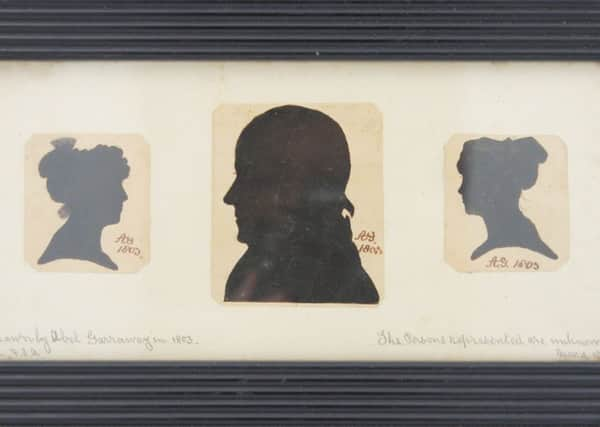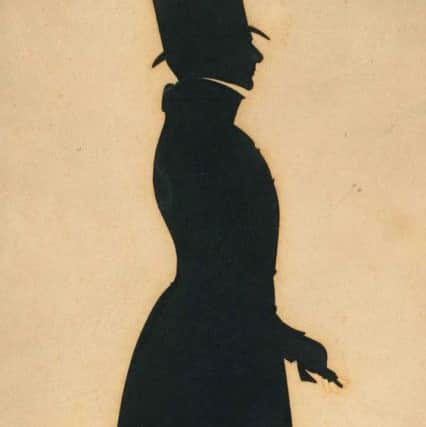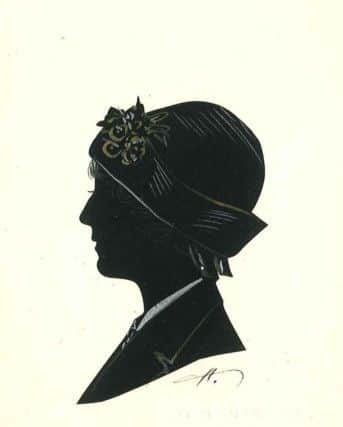Shadows from the past at Worthing Museum


This global craze has gripped royalty, politicians, media stars and the general public alike.
Although the selfie is a product of modern technology, the idea of circulating an image of yourself stretches back into human history, through photographs, portraits and silhouettes.
Advertisement
Hide AdAdvertisement
Hide AdFrom these options the silhouette is the one we are probably least familiar with.


A silhouette is an image represented as a solid shape of a single colour, usually black, its edges matching the outline of the subject.
Silhouette images can normally be described as pieces of cut paper, which were then stuck to a backing in a contrasting colour, and often framed.
The word “silhouette” derives from Étienne de Silhouette, a French finance minister who, in 1759, during the Seven Years’ War, imposed severe economic demands upon the French people.
Advertisement
Hide AdAdvertisement
Hide AdHis name became synonymous with anything done or made cheaply.


Silhouette profiles cut from black card were the cheapest way of recording a person’s appearance.
The term “silhouette”, although existing from the 18th century, was not applied to the art of portrait-making until the 19th century.
Cutting portraits, generally in profile, from black card became popular in the mid-18th century.
Advertisement
Hide AdAdvertisement
Hide AdSilhouette represented a cheap but effective alternative to the portrait miniature.
Highly skilled specialist silhouette artists could cut a high-quality bust portrait, by far the most common style, in a matter of minutes, working purely by eye.
A leading 19th century Sussex silhouette artist, Mr. Gapp, described himself in the 1840s as: “The original Profilist, for cutting accurate likeliness’s, in which the expression of the passions and peculiarity of character are brought into action in a very superior style.”
Mr. Gapp offered his services daily from the third tower of the chain pier, Brighton.
Advertisement
Hide AdAdvertisement
Hide AdThe cost for a full–length likeness was 2 shillings and 6 pennies, or a bust profile for 1 shilling.
You could also have a likeness of your dog for 1 shilling and 6 pennies.
To find out more about the history of the silhouette, Worthing Museum and Art Gallery is offering a series of talks this autumn by Suzanne Rowland, including fashion in 18th and 19th century silhouettes.
Using the costume collection from the museum to illustrate clothing worn in silhouettes, the talk will demonstrate that silhouettes offer a unique perspective on the wearing of dress, because unlike the stylised fashion plates of contemporary publications, they offer a more characterful representation of a sitter.
Advertisement
Hide AdAdvertisement
Hide AdYou will see that physical imperfections were not overlooked, and neither age nor social stranding were barriers to a person having their likeness captured on paper, card, ceramic, or on the reverse of convex glass.
Other talks include dressmaking practices in 18th and 19th century dress, and a history of weddings told through the costume collection at Worthing Museum.
Please see the museum website (worthingmuseum.co.uk), or contact the museum on 01903 221448, for more information on these and additional talks in this series.